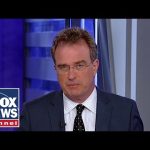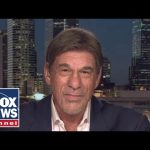**The Secret Service: Lessons Learned and a Push for Enhanced Security**
In a world where the stakes are ever-increasing and threats seem to materialize at every corner, the importance of the Secret Service cannot be overstated. Recent discussions led by former Secret Service agent Frank Leverage have uncovered some startling insights into the agency’s operations, particularly highlighting critical shortcomings that occurred during a significant event. As the nation reflects on these revelations, it becomes clear that the Secret Service must adapt to meet evolving threats and ensure the safety of its protectees, especially in the face of rising tensions and dangers.
Leverage has pointed to miscommunication and a lack of coordination as the main culprits for the mishaps experienced during a particular incident. He emphasized that without consistent communication between the Secret Service and local law enforcement, the ability to protect the President—and other high-profile individuals—could be severely compromised. This breakdown happened because essential teams, including snipers and counter-snipe units, lacked direction and were not present at critical meetings. Such oversights raise serious concerns: how can the Secret Service safeguard former Presidents amid a chaotic environment without a streamlined and unified command approach?
Adding to the discussion is the recent unanimous passage of HR Bill 9106, also known as the Enhanced Presidential Security Act of 2024. This legislation aims to revamp the way security personnel are allocated to protect not just the President, but also former Presidents and candidates. Given the multitude of threats, from domestic unrest to individuals with alarming motives, it is imperative that the Secret Service receives the funding and resources necessary to operate effectively. The past weeks have underscored the reality that America’s protectors are operating on limited resources, leading to inevitable strain and potential gaps in defense.
Leverage’s expertise suggests that technology must also play a crucial role in the evolution of the Secret Service. As new tools emerge—think drones and advanced surveillance systems—there’s an enormous opportunity to enhance protective methodologies. This isn’t just about responding to threats but also proactively avoiding them through improved intelligence and monitoring systems. A robust approach to embracing these advancements could be the answer to staying one step ahead of the adversaries threatening national security.
Ultimately, as the tensions rise in the political arena, the need for a capable and reliable Secret Service has never been clearer. It is essential for the agency to hold itself accountable and rectify the mistakes of the past. Fortifying recruitment and retaining top talent must also become a priority. With the pressures of modern protection services mounting, maintaining a skilled and alert workforce could spell the difference between security and vulnerability.
As the spotlight remains on the agency and its operations, Americans should feel reassured that steps are being taken to ensure the safety of their leaders. The lessons learned from recent missteps—alongside legislative efforts to bolster security—signal a focusing of efforts on refining the protective strategies needed in a rapidly changing world. The expectation now is that the Secret Service will rise to meet these challenges with the determination and resolve that America’s safety demands.




